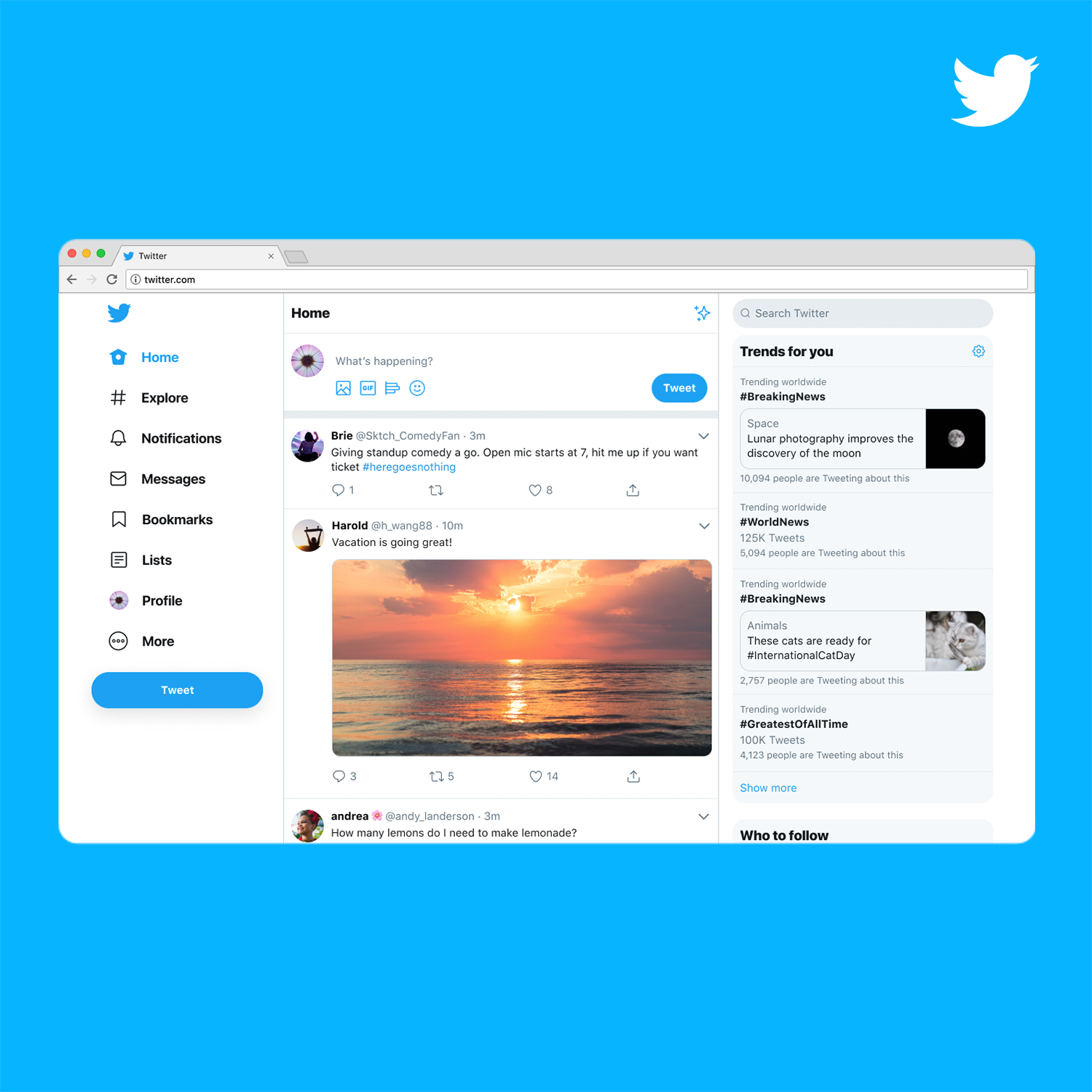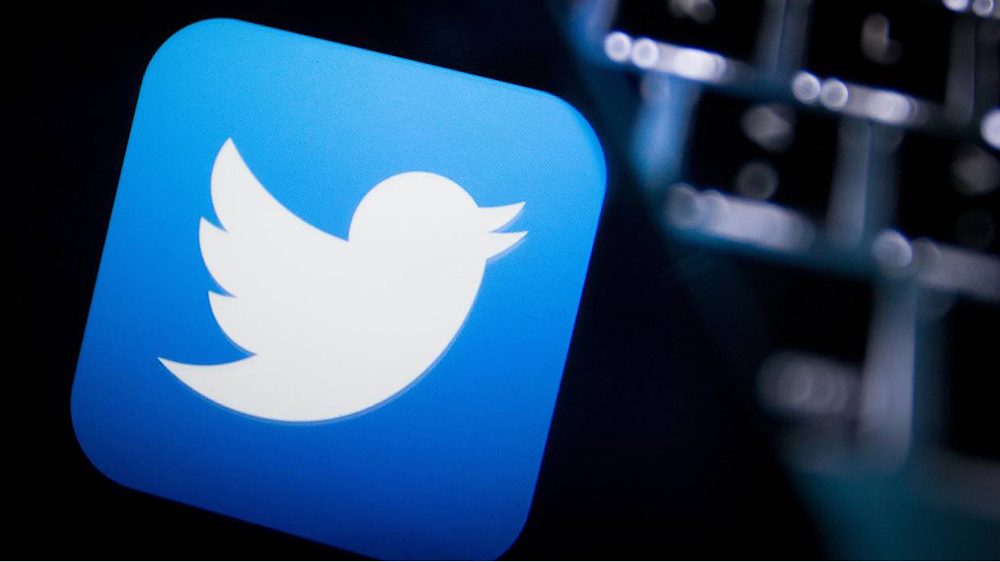Twitter Content Visibility- What Stays Hidden
Sometimes, you come across something online that just isn't quite there. It's a bit like trying to read a book where a few pages have been glued shut, you know? You see a title, maybe a hint of what's inside, but the actual details remain out of sight. This feeling, this experience of missing information, happens quite often on social media platforms, especially when content rules come into play.
We're talking about situations where a platform, for reasons of its own, decides not to display certain things. Perhaps it's a piece of writing, a picture, or even just a simple explanation of what something is about. The intention might be to keep things safe or to follow certain guidelines, but for someone trying to find something specific, it can feel a little frustrating, as a matter of fact.
This is precisely what happens with some posts from accounts like @gwcpublic. The platform makes it clear: "We would like to show you a description here but the site won't allow us." It's a direct message telling you that something is being held back, and it makes you wonder why, doesn't it?
- Services Offered By The Spa At Venetian Bay
- Turkish Ifsa Sotwe
- How Old Is Rachel Zane In Suits
- Michael C Hall Spouse
- Whoa Kemosabe Meaning
Table of Contents
- What Happens When Online Content Stays Hidden?
- The Case of a Missing 'twitter public nude' Description
- Why Do Platforms Limit What We See?
- How Content Policies Shape 'twitter public nude' Visibility
- Is It About Protecting People or Controlling Information?
- User Experience When Searching for 'twitter public nude' Material
- What Does This Mean for People Looking for Information?
- Seeking Transparency Around 'twitter public nude' Content
What Happens When Online Content Stays Hidden?
When you go to look for something on a website, you generally expect to see it, right? It's a pretty straightforward idea. But sometimes, what you're looking for, or at least a description of it, just isn't there. This can be a very confusing experience for people who are just trying to get a clear picture of what's going on, you know?
Platforms have a way of deciding what gets shown and what doesn't. They have rules, and these rules guide what appears on your screen. When a platform holds back a description, it's making a choice about what it considers suitable for everyone to see. This decision can be based on many things, like community standards or even legal requirements, so it's almost a complex situation.
This situation of hidden content can lead to a lot of questions. People might wonder what exactly is being kept from them. They might also think about why these decisions are made and who makes them. It really gets you thinking about how much control these platforms have over the information we get to look at, which is kind of interesting.
- Adriana Chechik Twiter
- Was Diana Pregnant When She Died
- What Is Patrick Mahomes Nationality
- Whats Simps
- Simp Means
The Case of a Missing 'twitter public nude' Description
Consider the specific example we saw with @gwcpublic. The platform states quite plainly that it wants to show a description, but it's not allowing it. This is a very clear signal that something about the content, or at least its description, doesn't fit within the site's guidelines. It leaves you with a bit of a mystery, doesn't it?
The phrase "twitter public nude" suggests a kind of content that might be sensitive or perhaps even against certain platform rules. When a description related to this kind of material is held back, it indicates a deliberate action by the platform. They are, in a way, drawing a line in the sand about what is acceptable for display. It's a pretty big decision, too.
For someone trying to find information or understand what an account is about, this lack of a description can be a real stumbling block. You're left to guess, or to try and find details somewhere else. It really highlights how platforms manage what users can and cannot see, especially when it comes to content that might be seen as controversial or outside of the usual, basically.
Why Do Platforms Limit What We See?
Social media platforms are like big public spaces, and just like any public space, they have rules to keep things in order. These rules are put in place for a lot of different reasons. One big reason is to try and keep people safe from things that might be harmful or upsetting. They want to make sure the experience is generally okay for everyone, you know?
Another reason platforms set limits is to follow the laws of different countries. What's allowed in one place might not be allowed in another, so platforms have to be careful about what they show globally. This means they often have to make choices that apply to a very wide audience, which can be a bit tricky, actually.
Also, platforms have their own brand image and reputation to think about. They want to be seen as responsible and trustworthy. If they allow anything and everything, it could hurt their standing and make people less likely to use their services. So, limiting what gets shown is also about protecting their own business, in a way.
How Content Policies Shape 'twitter public nude' Visibility
The policies that platforms create are the main tools they use to control what appears. These policies spell out what kind of content is allowed and what is not. When it comes to something like "twitter public nude" content, these policies would likely have very specific guidelines about how it's handled, if it's handled at all. It's pretty clear.
If a description for something like "twitter public nude" is blocked, it means that the content, or at least the way it's presented, goes against one or more of these rules. It could be about showing too much, or it could be about the context in which it's shared. The policies are designed to catch these things and prevent them from being openly displayed, so that's why it happens.
These content policies are constantly being reviewed and updated. What was acceptable last year might not be acceptable this year, or vice versa. This means that the visibility of content, even a description of "twitter public nude" related material, can change over time as platforms adjust their rules. It's a rather fluid situation, you know?
Is It About Protecting People or Controlling Information?
This is a question that comes up a lot when platforms decide what we can and cannot see. On one hand, there's a strong argument that these decisions are made to keep people safe. They want to protect younger users, or people who might be upset by certain kinds of material. This protective stance is a very common reason for filtering content, as a matter of fact.
On the other hand, some people worry that platforms might be controlling information too much. When a description is hidden, it's not just about stopping harmful content; it's also about deciding what kind of discussions or topics are allowed to be openly talked about. This can feel a little bit like censorship to some people, which is a concern.
Finding the right balance between protecting users and allowing free expression is a really tough job for these platforms. There's no simple answer, and what one person sees as protection, another might see as an unnecessary restriction. It really highlights the ongoing debate about how much power these big online companies should have, you know?
User Experience When Searching for 'twitter public nude' Material
Imagine you're looking for something specific, perhaps some information or a particular kind of account. You type in your search terms, maybe something like "twitter public nude," and then you see that message: "We would like to show you a description here but the site won't allow us." How does that feel? It's probably a bit confusing, right?
This experience can be pretty frustrating for users. It creates a barrier to finding what they're looking for. They might wonder if the content even exists, or if they're doing something wrong. It's a clear signal that the platform is stepping in and limiting access to certain kinds of information, even if it's just a description, so that's a thing.
For platforms, this kind of user experience is a careful balancing act. They want to maintain their rules, but they also don't want to make their users feel completely shut out or confused. The goal is often to deter certain searches or content without completely alienating their user base, which is a rather delicate operation, you know?
What Does This Mean for People Looking for Information?
When platforms decide to hold back descriptions or content, it means that people looking for certain kinds of information might have a harder time finding it. It's like trying to find a specific book in a library where some of the card catalog entries have been taken out. You know the book is there, but you can't easily find it, basically.
This situation can lead people to look for information in other places, or to try and find ways around the platform's restrictions. It can also make people question the transparency of these platforms. They might wonder why some things are hidden and others are not, and what the real reasons are behind these decisions, which is a pretty common thought.
For those who rely on social media for news, entertainment, or connecting with others, these content limitations can change their entire experience. It shapes what they see, what they discuss, and even what they believe is available online. It really highlights the significant influence platforms have on our daily access to information, you know?
Seeking Transparency Around 'twitter public nude' Content
One thing that many people wish for is more openness from platforms about why they make these content decisions. When a description for something like "twitter public nude" is blocked, it would be helpful to know the specific reason. Was it against a rule about explicit content? Was it about age restrictions? A little more detail could go a long way, you know?
Clearer communication about content policies helps users better understand what's allowed and what's not. It also helps them understand the platform's values and how they aim to keep their online space in order. Without this kind of openness, it can feel like decisions are being made behind a curtain, which is not ideal, really.
Ultimately, the way platforms handle content, especially sensitive topics like "twitter public nude," has a big impact on how we all experience the internet. The desire for more clarity and a better understanding of these rules is a pretty common feeling among users. It's about wanting to know why certain things are seen and others are kept hidden, so that's a big part of it.
- Daenerys Height
- How Many Nose Jobs Did Michael Jackson Have
- Jack Leius Nationality
- Richard Ayoade Mandalorian
- Checkpoint Bots Destiny 2

Introducing a new Twitter.com

Twitter to Develop a Decentralized Social Media Platform

GitHub - ErenYalcn/twitter-clone: You can review the project I made to